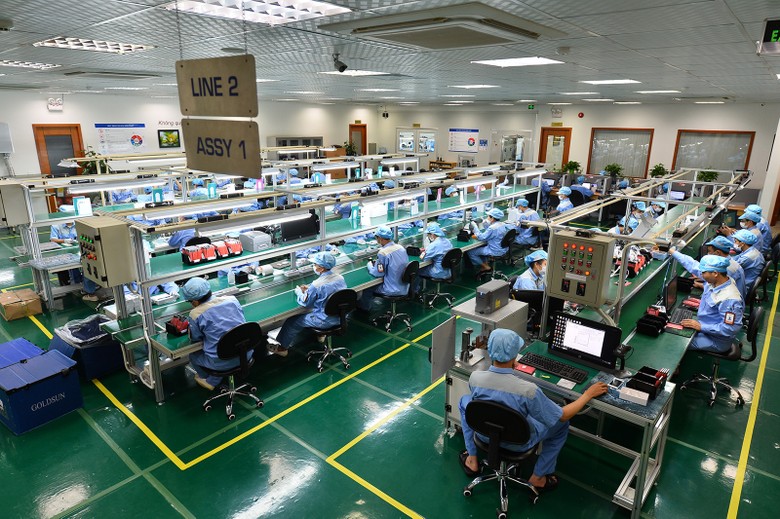
Vietnam is likely to see a current account deficit in 2021, before returning to a modest surplus in 2022.
While supply chain disruptions raise questions on Vietnam’s FDI prospects, HSBC believes long-term growth potential remains.
Data: Exports continued to recover, thanks to electronics and machinery shipments; demand-side prices remained weak.
As such, the services deficit will likely remain a drag, though likely a smaller one, on the current account. That said, it is not all gloom and doom. A consistent injection of remittances, thanks to a large population of Vietnamese migrants overseas, is one of the green shoots.
Despite the pandemic, Vietnam is estimated to be Asia’s third largest remittances recipient in 2021, with inflows worth USD18bn, just after mainland China and the Philippines. In times like now, persistent remittances provide invaluable support to Vietnam’s current account position.
Meanwhile, Vietnam’s trade balance will likely regain a surplus position in 4Q, as the economy re-opened from 1 October. Exports in November rose 18.5% y-o-y, led by strong growth in smartphones (up 23% y-o-y) and machinery shipments (up 29% y-o-y).
While favourable base effects partly explained the surprisingly high growth, the level of exports nonetheless returned to the pre-Delta variant level. Among the most affected sectors, textiles have gradually recovered (up 25% y-o-y), but the footwear industry is still impacted (down 14% y-o-y).
In October and November, the trade balance returned to an accumulative surplus of USD2.8bn, after two consecutive quarters of deficits, successfully pushing Vietnam’s YTD trade balance to a marginal surplus of USD0.9bn (Chart 3). However, even if we may see a trade surplus in 2021, the magnitude is unlikely to offset the primary and services deficits.
As such, HSBC expect to see a small current account deficit, possibly around 0.5% of GDP, before returning to a modest surplus of 2.3% of GDP in 2022 (Chart 1). Still, one word of caution is warranted, as to how quickly Vietnam can restore its supply chain largely hinges on how quickly it can contain the current COVID-19 wave.
On a related note, consistent FDI inflows have been a firm pillar to support Vietnam’s core balance.
Despite pandemic-induced uncertainties, net FDI has been consistently accounting for 6% of GDP, an amount similar to that before the pandemic. This is key to Vietnam, as the influx of foreign investment into productive manufacturing sectors has changed Vietnam’s current account landscape. That said, recent severe supply chain disruptions raise questions on Vietnam’s investment prospects. Large garment and footwear names, such as Crocs and Lululemon, are reported to move some of their productions out of Vietnam.
Indeed, there is indeed short-term volatility, as Vietnam is still battling another surge in daily infections and facing a significant labour shortage. However, we believe FDI decisions depend on an economy’s medium- to long-term potential. There are still good reasons to remain positive on Vietnam’s fundamentals, given its comparative advantage in labour cost effectiveness, improving infrastructure, existing industry clusters, and multiple free trade agreements.
New FDI inflows still grew almost 4% y-o-y as of November 2021, half of which was thanks to additional capacity in the manufacturing sector. Tech giants, including Samsung and LG, have previously announced investments to expand their production capacity.
Ultimately, the priority for policymakers is to put growth back on track and reassure foreign investors. The most urgent task is how to contain the current fifth COVID-19 wave and introduce viable incentives and arrangements to lure migrant workers back to factories in a safe and sustained manner.
Delta variant is still here
While the Omicron variant has dominated global attention, the Delta variant remains the biggest risk to Vietnam’s nascent recovery. On a seven-day moving average, daily infections have tripled since end-October, reaching a new record high of 14k by mid-December. Cases seem to have moderated lately, but data are somewhat distorting, as a one-off spike of 28k cases, detected in Binh Duong province from 10 July to 3 November, was only added to the official count on 23 November. Stripping out the data distortion, new infections have been ticking up consistently, and there are no signs of moderation.
Elevated case numbers remain concentrated in HCMC and surrounding provinces, posing the biggest headwind to Vietnam’s manufacturing revival and consumption recovery. Meanwhile, inflation rose 0.3% m-o-m in November, after two months of consecutive falls.
However, most of the driving force was due to persisting high energy prices. Transport cost rose 3.1% m-o-m, equivalent to a 21% y-o-y increase. Meanwhile, housing and construction material cost resumed their increase, after two months of declines. That said, demand-pull prices remained weak, given lingering restrictions. In response to surging COVID-19 cases, some local authorities, such as in HCMC, have quickly rolled back easing measures in non-essential sectors’ re-openings. This means domestic demand will likely remain subdued for a while. HSBC expects Vietnam’s inflation to average around 1.9% in 2021, before recovering to 2.7% in 2022